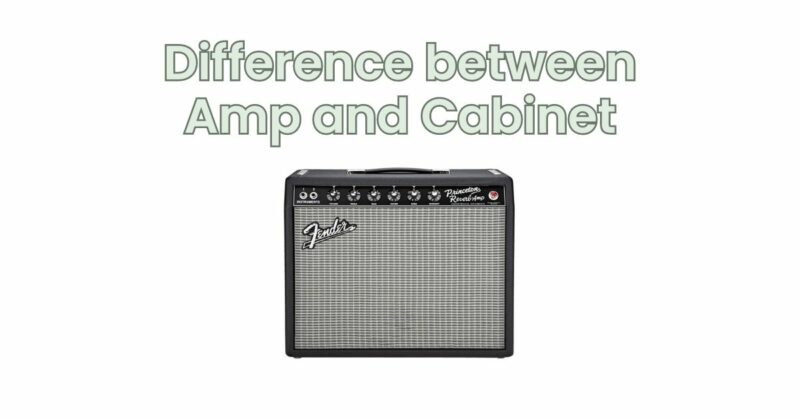When it comes to guitar amplification, understanding the distinction between an amplifier (amp) and a speaker cabinet (cab) is crucial. While they work together to create the overall sound, each component plays a unique role in the signal chain. In this article, we delve into the differences between an amp and a cabinet, exploring their individual functions and contributions to the guitar sound, helping you grasp their significance and make informed decisions for your amplification needs.
Amplifier (Amp): Power and Tone Shaping The amplifier, often referred to as the “amp,” is the electronic device responsible for boosting the guitar signal and shaping its tone. Here are some key aspects of the amplifier:
- Signal Amplification: The amp’s primary function is to amplify the weak electrical signal generated by the guitar’s pickups. It increases the signal strength to a level suitable for driving a speaker and producing audible sound.
- Preamp Section: The preamp section of an amp shapes the tonal characteristics of the guitar sound. It controls aspects such as gain, equalization (EQ), and various tone-shaping controls (e.g., bass, mid, treble). The preamp contributes to the coloration and character of the overall sound.
- Power Amp Section: The power amp section of the amplifier takes the preamplified signal and further amplifies it to drive the speaker cabinet. The power amp section also contributes to the overall tonal characteristics, including factors like headroom and breakup when pushed to higher volumes.
- Effects and Connectivity: Many amplifiers come equipped with built-in effects such as reverb, delay, and modulation. Additionally, amps provide various connectivity options, including inputs for multiple instruments, external effects loops, and speaker outputs.
Speaker Cabinet (Cab): Sound Projection and Response The speaker cabinet, or “cab,” is the enclosure that houses one or more speakers, playing a crucial role in sound projection and response. Here are some key aspects of the speaker cabinet:
- Sound Projection: The main purpose of the speaker cabinet is to convert the electrical signal from the amp into audible sound. The speakers within the cabinet generate sound waves by vibrating air molecules, projecting sound into the environment.
- Speaker Configuration: Speaker cabinets can be configured with various types and sizes of speakers, each with its own sonic characteristics. The number of speakers and their arrangement, such as a single speaker (1×12), two speakers (2×12), or even four speakers (4×12), impact the overall sound projection, dispersion, and tonal balance.
- Speaker Response: Different speakers have unique frequency responses and tonal characteristics, influencing the overall sound. Factors like speaker size, magnet type, cone material, and voice coil configuration contribute to the speaker’s tonal response, affecting qualities such as bass response, midrange presence, and treble clarity.
- Cabinet Construction: The construction of the speaker cabinet, including the material, size, and design, can also affect the overall sound. Different cabinet materials, such as wood or specialized composite materials, can impact resonance, resonance, and resonance, while cabinet design factors like porting or closed-back configurations influence the bass response and overall sonic qualities.
Conclusion: Understanding the differences between an amplifier (amp) and a speaker cabinet (cab) is essential for shaping your guitar sound. The amp functions as the core of the amplification system, amplifying the guitar signal, shaping the tone, and providing effects and connectivity options. The speaker cabinet, on the other hand, converts the electrical signal into audible sound, projecting and shaping the overall sound response through its speakers and cabinet design.
When selecting an amplifier and speaker cabinet, consider factors such as desired tonal characteristics, power requirements, portability, and budget. Both the amp and cab contribute to the final sound, and choosing the right combination can help you achieve the tone and projection you desire. Experimentation with different amp and cab combinations can yield exciting sonic possibilities, allowing you to craft a sound that suits your musical style and preferences.

